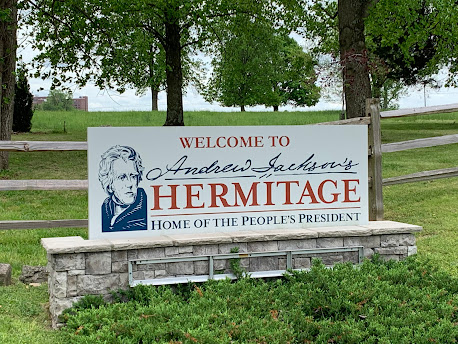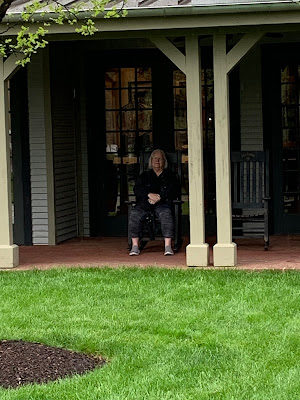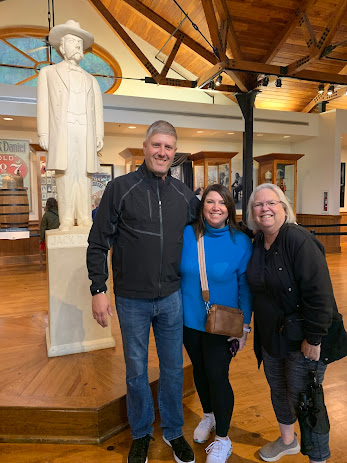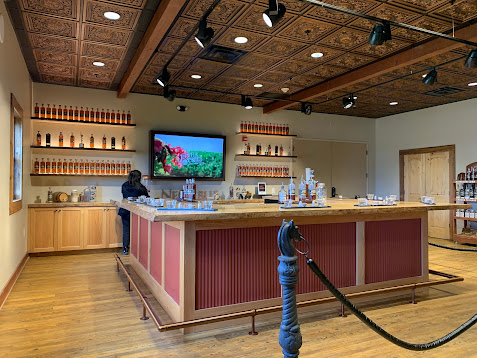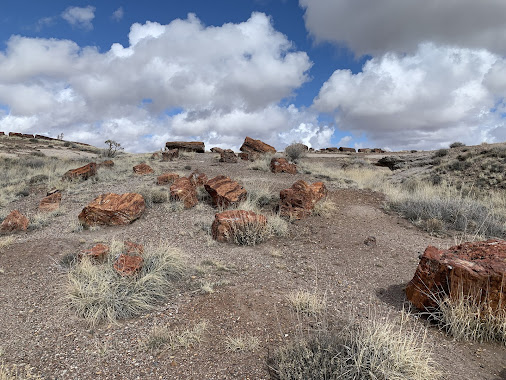As we began our drive out of Arizona, we arranged to make one last stop. As we criss-crossed the country, we'd seen signs but had never made the stop. This was the time!
This is a National Park in Navajo and Apache counties in northeastern Arizona. It is named for its large deposits of petrified wood and covers about 346 square miles. The site, the northern part of which extends into the Painted Desert, was declared a national monument in 1906 and a national park in 1962.
The Petrified Forest is known for its fossils, especially fallen trees that lived in the Late Triassic Epoch, about 225 million years ago. The sediments containing the fossil logs are part of the widespread and colorful Chinle Formation, from which the Painted Desert gets its name. Paleontologists have been unearthing and studying the park's fossils since the early 20th century.
There are two ways to enter the park - we chose the Painted Desert (north) entrance and our first stop was the Visitor Center.
The Painted Desert is composed of stratified layers of siltstone, mudstone, and shale of the Triassic Chinle Formation, which erode easily. These fine-grained rock layers contain abundant iron and manganese compounds, which provide the pigments for the various colors of the region. Thin, resistant lacustrine limestone layers and volcanic flows cap the mesas. Numerous layers of silicic volcanic ash occur in the Chinle and provide the silica for the petrified logs of the area. The erosion of these layers has resulted in the formation of the badlands topography of the region.
We picked up a map, got the lay of the land, and off we went.
The Tawa Point is named for Tawa, the Hopi Sun Spirit. According to Hopi beliefs Tawa is the Creator, and it was he who formed the First World out of Tokpelia, or Endless Space, as well as its original inhabitants.
Tawa Point
Taking its name from the Spanish word for "painted", Pintado Point is the highest point along the driving route, and provides a 360 degree view of the Painted Desert.
Pintado Point
Hozho Point
Gorgeous! But it was time to move on and we found ourselves passing through the section known as The Tepees. Named for their shapes, this region of the Painted Desert is dominated by blues, rust, and white. The road gives a close-up view of the multi-layered rock formations.
ROCKS! Ron was in heaven!
Into the Petrified Forest which had its beginnings in the Late Triassic Period when all of Earth's continents were connected in a super landmass called Pangaea. Some scientists believe the region that is now Arizona was located along the same parallels as Costa Rico and had a tropical climate.
It is interesting to note that petrified wood can be found in all 50 states and many locations around the world. What sets Arizona's petrified forest apart is that it contains the largest concentration of petrified wood on earth.
We stopped to check out the Agate Bridge, originally called Natural Bridge, which is a partially exposed petrified log spanning a gully of Agate Mesa forming a "bridge".
The landmark has long been one of the most popular attractions in Petrified Forest since the beginning and in the early history of the park many visitors had their picture taken while standing on the "bridge".
At least he wasn't standing ON the bridge
Fear of the collapse of the landmark led to masonry pillars being constructed underneath in 1903, later followed by concrete in 1911. These were replaced by a concrete beam in 1917 at the cost of $1700, paid for by the government and installed by the railroad. The log is about 100' in length and 4' in diameter at its base. It spans 40' across the chasm and is 16' above the canyon floor. In the late 1800s the paleobotanist Lester Ward proclaimed the Agate Bridge to be the "most noted singled petrified log in the world."
Stream running under the Agate Bridge
The conifers that comprise most of the fossilized logs in the park were buried by stream-deposited sediment, including volcanic ash, then gradually turned to stone by the slow replacement of organize matter by silica, to form quartz. For most of the logs in the park,, the mineral is massive, lacking obvious crystalline faces, but in one section the fossils contain cavities in which actual crystals were found, a mix of clear quarts and purple amethyst - the region became known as the Crystal Forest.
Although the best specimens were removed long ago by souvenir hunters, some of whom even blew up large logs using dynamite to extract the crystalline inclusions, a few small examples remain, The area also has many more conventional logs, typically large and varied in form.
And then we entered the Rainbow Forest Historic District and Museum.
Rainbow Forest was the heart of the original Petrified Forest set aside by President Theodore Roosevelt as a national monument in 1906. One of the earliest facilities in the park was a wood and tar paper shack near where the current museum is located.
The building of Rainbow Forest occurred between June through December, 1931. The contract was for the amount of $21,094 which provided for an Administration Building, three residences, and one tool and implement shed.
There were some nice trails behind the museum which gave us a close up view of the fossils.
The museum had some beautiful polished petrified wood.
Collecting petrified wood is prohibited within national parks and monuments in order to preserve natural and cultural resources.
This young boy had second thoughts and decided to return the rock he "borrowed" from the park.
It might be a "hurnea" - hahahahaha!
We exited the park and immediately found establishments where you could buy fossils. These people went overboard.
The shop owner told us he was bored during Covid so made this display.
The photos really don't do it justice.
One more stop which had some interesting items.
We had a coupon from the RV park
Creative way to use petrified wood.
"Wild Bill" is a fossilized alligator which is approximately 2.9 million years old. He was found in Charlotte County, Florida.
A display of quartz-filled petrified wood. It is 26 feet long in 45 pieces and took over 200 hours to hand polish.
One last item before we left - BEAUTIFUL!
We headed out the next day and had quite an experience after we'd been on the road about 20 minutes.
A semi truck filled with magnesium batteries caught on fire and there was no way for them to quickly extinguish the fire since water can't be used. So we sat on the on-ramp for three - THREE - hours! One thing you can't do with a trailer is turn around.
